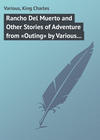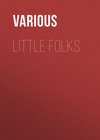Читать книгу: «The Mirror of Literature, Amusement, and Instruction. Volume 10, No. 269, August 18, 1827», страница 3
MY COMMON-PLACE BOOK,
NO. XIX
NOVEL WRITERS AND NOVEL READERS
Auto-biography of men, who held no distinguished rank in the political world, is often very pleasant reading; especially where the writer has a strong tincture of vanity, and is obviously blind to his own character; for, if he does not know it himself, he is sure to let his readers know it; if he does not see the dark spots, he will not endeavour to conceal them; and, if he thinks them bright ones, he will blazon them. But novel-writing, when well done, is, after all, the best species of writing; for, if what all the world says, is true; what all the world reads, must be good. A novel writer, of any talents, will draw his portraits from the life—will catch at every striking feature, and generally paint man as he is; and there is this difference between actual histories and works of imagination, that the former are for the most part true in letter, but false in spirit; and the latter, false in letter, and true in spirit; the one is correct in names, dates, and places, but out of truth in everything else: the other is not correct in names, dates, and places, but perfectly true in every other point.
The worst part of a novel is the hero or heroine: these are too frequently fabrications from the author's fancy, instead of portraits from nature; or, if taken from life, they are tortured into a perfection that life never knew. This is too much the case with "Thaddeus of Warsaw," and ten thousand others. Ladies are not good hands in painting heroes, nor gentlemen always equal to the portraying of heroines. The author of Werter knew that, and therefore he did not disfigure his wicked and interesting work with an artificial Charlotte: he leaves her to the reader's own fancy, who has nothing to do but to fancy himself Werter, and his own imagination will paint Charlotte.
When the hero is made the vehicle of one moral lesson, as Vivian, in Miss Edgeworth's "Tales of Fashionable Life," then there is no need of artificial ornament; and when there is no intention of presenting an unmixed character of evil, nothing remains but to draw from life, and the work is perfect. One of Miss Edgeworth's failings is of great service to her, in this kind of painting: she wants what some persons call feeling, that is to say, she does not believe in the omnipotence of love, and therefore would never have written such a book as the "Sorrows of Werter;" and if she had possessed the same materials, she would have produced a very different work—not so full of genius, perhaps, but an interesting and instructive tale.
Novels are productions more easily criticised than any others: every one may judge for himself of the truth or probability of the events, and the accuracy of the features of character. It is impossible almost to deceive a reader—to palm upon him fiction for truth; for the truth is felt, if it be there, and the falsehood is palpable and revolting. There is also an extensive light of information in them. They do not merely give one scene, or character, or class of characters; but their principles are generally applicable to a very wide extent—they exercise the mind to a habit of observation, and so far from giving false views of life, they more frequently direct us to its true estimate. To be sure, there is sometimes a degree of improbability in some of the incidents, which is mostly forgiven, if the whole mass be, in the main, true and accurate. There are certain standard incidents, which are common property—such as the discovery of relationships—the change of children—and liberal aunts, who make nothing of presenting a young married couple with twenty or thirty thousand pounds on their wedding day; but, if any young lady or gentleman is silly enough to marry, without the means of support, because they have read such things in novels, and have also read of rich uncles all of a sudden returning from the East or West Indies, to shower gold and pearls on all their relations, all that must be said for them is, that they have not sufficient sense to read "Aesop's Fables," and they might as easily be misled into the imagination that brutes could talk. It is a very weak charge against novels, that they present false views of life; for, when they do, none but silly people read them; and they are just as wise after, as they were before.
If there be any evil in novels at all, it is when they take people from their business—when they occupy a mother's time to the neglect of her children—when they lead idle boys to neglect their lessons, and when they lead idle gentlefolks to fancy themselves employed, when they are only killing time. W.P.S.
CARRIER PIGEONS
(For the Mirror.)
It appears by the Dutch papers that pigeons are now used to forward correspondence between different countries in Europe, and one was lately found resting on a house in Rotterdam. The carrier pigeon has its name from its remarkable sagacity in returning to the place where it was bred; and Lightow assures us, that one of these birds would carry a letter from Babylon to Aleppo, which is thirty days' journey, in forty-eight hours. This pigeon was employed in former times by the English factory to convey intelligence from Scanderoon of the arrival of company's ships in that port, the name of the ship, the hour of her arrival, and whatever else could be comprised in a small compass, being written on a slip of paper, which was secured in such a manner under the pigeon's wing as not to impede its flight; and her feet were bathed in vinegar, with a view to keep them cool, and prevent her being tempted by the sight of water to alight, by which the journey might have been prolonged, or the billet lost. The pigeons performed this journey in two hours and a half. The messenger had a young brood at Aleppo, and was sent down in an uncovered cage to Scanderoon, from whence, as soon as set at liberty, she returned with all possible expedition to her nest. It is said that the pigeons when let fly from Scanderoon, instead of bending their course towards the high mountains surrounding the plain, mounted at once directly up, soaring still almost perpendicularly till out of sight, as if to surmount at once the obstacles intercepting their view of the place of their destination. Maillet, in his "Description de l'Egypt," tells us of a pigeon despatched from Aleppo to Scanderoon, which, mistaking its way, was absent for three days, and in that time had made an excursion to the island of Ceylon; a circumstance then deduced from finding green cloves in the bird's stomach, and credited at Aleppo. In the time of the holy wars, certain Saracen ambassadors who came to Godfrey of Antioch from a neighbouring prince, sent intelligence to their master of the success of their embassy, by means of pigeons, fixing the billet to the bird's tail. Hirtius and Brutus, at the siege of Modena, held a correspondence with one another by means of pigeons. Ovid informs us that Taurosthenus, by a pigeon stained with purple, gave notice to his father of his victory at the Olympic games, sending it to him at Ægina; and Anacreon tells us, that he conveyed a billet-doux to his beautiful Bathyllid, by a dove. Thus, says Bewick, "the bird is let loose, and in spite of surrounding armies and every obstacle that would have effectually prevented any other means of conveyance, guided by instinct alone, it returns directly home, where the intelligence is so much wanted. Sometimes they have been the peaceful bearers of glad tidings to the anxious lover, and to the merchant of the no less welcome news of the safe arrival of his vessel at the desired port."
In this flighty and pigeoning age, I would recommend a pigeon-carrier-company, whose shares might be elevated to any height.
P. T. W.
MISCELLANIES
NAMES OF SHEEP
A ram or wether lamb, after being weaned, is called a hog, or hoggitt, tag, or pug, throughout the first year, or until it renew two teeth; the ewe, a ewe-lamb, ewe-tag, or pug. In the second year the wether takes the name of shear-hog, and has his first two renewed or broad teeth, or he is called a two-toothed tag or pug; the ewe is called a thaive, or two-toothed ewe tag, or pug. In the third year, a shear hog or four-toothed wether, a four-toothed ewe or thaive. The fourth year, a six-toothed wether or ewe. The fifth year, having eight broad teeth, they are said to be full-mouthed sheep. Their age also, particularly of the rams, is reckoned by the number of times they have been shorn, the first shearing taking place in the second year; a shearing, or one-shear, two-shear, &c. The term pug is, I believe, nearly become obsolete. In the north and in Scotland, ewe hogs are called dimonts, and in the west of England ram lambs are called pur lambs.
The ancient term tup, for a ram, is in full use. Crone still signifies an old ewe. Of crock, I know nothing of the etymology, and little more of the signification, only that the London butchers of the old school, and some few of the present, call Wiltshire sheep horned crocks. I believe crock mutton is a term of inferiority.
Conceit and confidence are both of them cheats; the first always imposes on itself, the second frequently deceives others too.—Zimmerman.





















